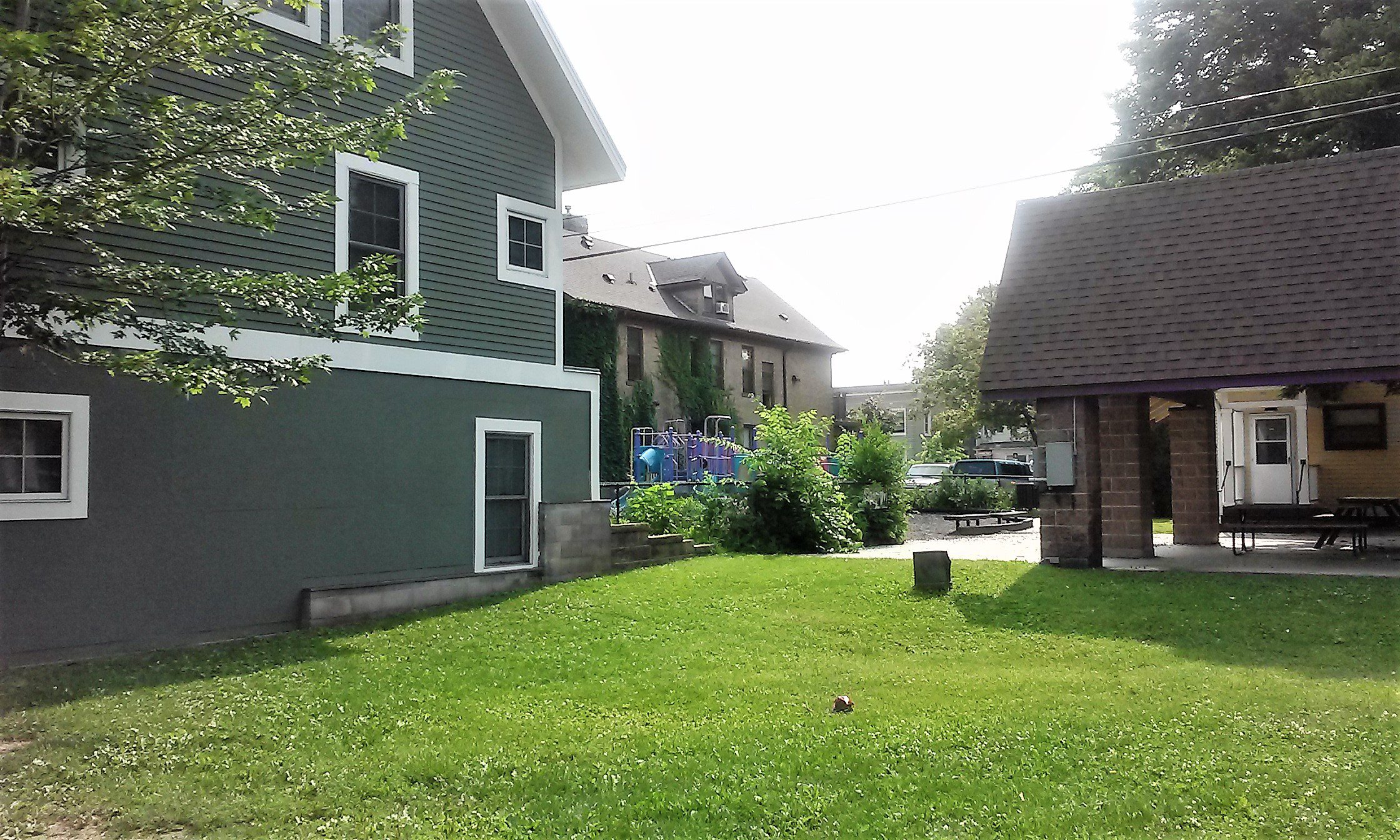
An undesignated open space in a community land trust in Minnesota. Photo courtesy of Deborah Martin
Community control of land should mean the ongoing capacity of people who are part of a community to make (and also remake or change) meaningful decisions about the use of that land.
Community control often gets conflated with affordability for neighborhoods seeing rising prices, and it’s obviously good (and sometimes vitally important) to make land stay affordable. But affordability is not the same as democratic decision-making about collectively owned land. If we are to imagine more explicit control over land through CLTs, what would it look like?
We argue that CLTs might start by restructuring the way land ownership is actualized through the ground lease. CLTs are said to allow for community control of land because they own land in perpetuity, but in reality that ownership is greatly constrained by the ground lease. CLTs are not in a position to do much of anything with the land under normal circumstances when a homeowner is in the house on a CLT parcel. The homeowners use the land and the “community” has no control or access. The CLT members cannot, for instance, decide to plant fruit trees in a homeowner’s yard to sell the fruit at the local farmer’s market. Nor can they decide to double the floor area ratio on the site by building another house on the land. Nor can they combine contiguous parcels’ backyards to create a pocket park or community garden. The CLT owns the land but does not exercise the control that ownership normally brings with it.
Thus for all practical purposes, the role of community control of the CLT is most explicitly exercised in moments of new land acquisition. That is when a CLT is in a position to make decisions about what can happen with the land (and where CLT land will be). Here we have another dilemma: in order to get the funding necessary to acquire the land, you have to use the land for the purposes the funding is intended, so most of the decision-making is over by the time the acquisition is happening. Non-housing uses of land, like playgrounds, community gardens, or community centers, might not be options that are typically considered for this reason. Non-housing uses take forethought, financial planning, and different funding sources (which often are harder to come by).
Thinking beyond the typical affordable housing ground-lease model would be necessary for a broader discussion about community needs, use, and CLT control in relation to land. What if the CLT membership actually made decisions about the land that was forever “in trust” for them? Rather than giving homeowners private use of the land, the membership could decide, with the homeowners’ agreement, to implement other uses, writing flexibility into the model. This would require a radical transformation of how CLTs operate. It would mean de-emphasizing affordable housing as a goal, which would likely come at the cost of broad political (and perhaps financial) support. But redesigning the ground lease for community control could make non-housing uses like parks and gardens more feasible. Ultimately, this change would mean residents of low-income neighborhoods could have more land available to them for community uses. Essentially, a re-orientation of the CLT model back to its ideals of community control would mean a reconceptualization of the relationship between individual CLT residents, the CLT, and land.


All good points, but there is an important point missing here. Is the CLT itself democratic? Does it have a Board elected by a combination of the residents and members from the surrounding community or does it just have a self-perpetuating Board? There are a lot of organizations out there that call themselves a Community Land Trust but are actually just another form of top-down non-profit organization.
This presumes several things that may or not be true. First it equates “community” with “neighborhood.” One could postulate that community has many more diverse meanings. Secondly, it presumes that all CLT land is contiguous, which certainly isn’t the case in our program. Most disturbingly it seems to subordinate that homeownership aspect of the program to the needs of the theoretical community. Our members are homeowners in the strictest sense of the word. Their little plot of paradise is their home. You want their backyard to be part of a community garden, they want a practice area for their aspiring young FIFA star. Who is in control? To exercise ongoing “community control” of how their leasehold is used would dis-empower them and reduce them to the stature of renter. Having said all of that, such ideas might work in townhouse or condo communities where there are common elements fully disclosed to the buyer before they move in. My initial thoughts…
I feel that I have seen examples of CLT that do have a mix of community gardens/ other uses and housing as part of the development. Madison Community Land Trust and Dudley Neighbors comes to mind. I would be curious to know what they do differently that enables them to incorporate these uses into their development. Is it just that they did it when they first acquired the land?
It think the premise is interesting, and another person brought up the point that the Board is not actually democratically elected, which I hadn’t thought of before.